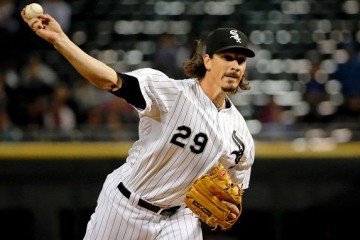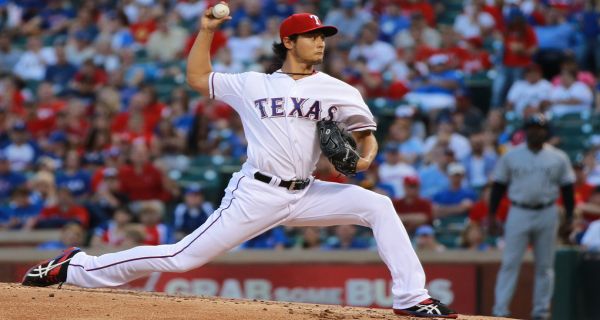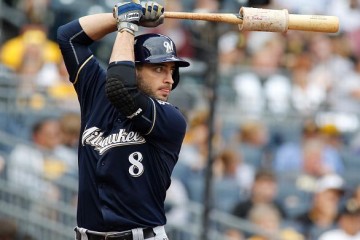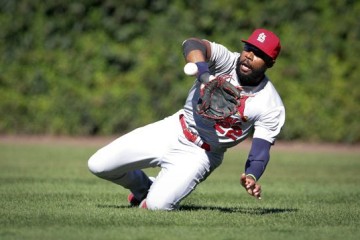Rotters and Sleepers: Starting Pitchers
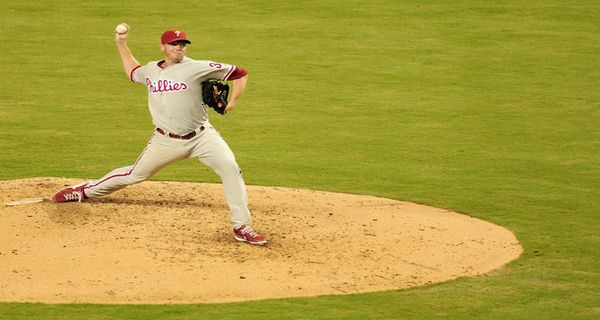
Pitching is the most elusive of all the positions in baseball. Whether it be starters or relievers, performance from season to season seems to be more fickle than most positions. Yet, real general managers and fantasy baseball managers will spend more figurative money (if you are in an auction league) or spend more figurative top picks on pitching than any other position.
Identifying sleepers is harder with pitchers than it is with position players. The very first thing you must do is determine whether their performance was negative because of bad luck or whether there are genuine signs of decay. Total run index is good for that purpose as it peels away with the luck that comes with wins and losses, and even ERA and shows the real pitcher at any point in time.
Naturally, predicting the future is just as difficult as it is offensively, but at least we are evening the odds by distilling out the numbers that are dependent purely on luck (or forces out of the pitcher’s control). Since there are approximately 200 pitchers in the starting pitcher universe, this won’t be an exhaustive list, but these are the names you are likely thinking of.
Roy Halladay— Philadelphia Phillies
- 2012: -1.7
- 2011: +40.0
- 2010: +38.8
- 2009: +46.9
- 2008: +41.9
Just imagine that as recently as 2011, Halladay and Chris Carpenter were involved in a classic pitcher’s duel in the NLDS. Carpenter won that one 1-0 and is now probably out of commission for good. If you follow the reports from Spring Training you’d be led to believe that Halladay is as well. He is pitching in the mid 80s with his fastball. He has a couple of weeks to find himself, but I’d be very wary of expecting him to return to his 2011 and prior form. Grade: Rotter
[am4show have=’p4;p7;p3;’ guest_error=’Front Office’ user_error=’Front Office’ ]
Tim Lincecum— San Francisco Giants
- 2012: -17.4
- 2011: +15.7
- 2010: +17.4
- 2009: +44.3
- 2008: +49.3
When you look at total run index scores you will notice why I left Lincecum out of my top sixty starter list on the starting pitching rankings. It wasn’t 2012 so much as the collective losses in quality between 2010 and 2012. 2012 is definitely worse than what he should be, but he should be closer to neutral when the dust settles. Can we label that as being a sleeper? I’m not sure that would qualify in my book, but you can make your own determination. Grade: Rotter
Johan Santana— New York Mets
- 2012: -5.6
- 2011: -15.9
- 2010: +18.3
- 2009: +16.6
- 2008: +35.9
Santana missed the entire 2011 season and therefore was given a replacement level equivalent score (-15.9). He technically improved last season and certainly had his moments (a no-hitter), but he is definitely not the same as he was before he injured. Many experts say that pitchers are better in their second season back from injury, so there could be a modicum of improvement next season, but he likely will never be what he was even in 2010 again. Grade: Rotter
Dan Haren— Washington Nationals
- 2012: -7.1
- 2011: +28.1
- 2010: +16.2
- 2009: +36.2
- 2008: +36.6
With all of these guys we notice that performance is on the decline, but Haren’s decline was not nearly as sharp as the guys above, so there is little outside of injury that could explain the decline we saw in 2012. The Nationals let Edwin Jackson go (usually hovers around average) in lieu of picking up Haren. Haren is usually better, so it is a reasonable gamble. Given that he is moving to a weaker league it is also a reasonable gamble for you too. Grade: Sleeper
Josh Beckett— Los Angeles Dodgers
- 2012: -0.9
- 2011: +27.9
- 2010: -11.9
- 2009: +30.0
- 2008: +23.7
The decision to sign Beckett to a long-term deal was a dubious decision at best. The decision to trade for Beckett was an even worse decision, but the Dodgers are throwing around money like it’s growing on trees. Maybe it is in their case, but they have acquired a number of players on the way down. At least Beckett doesn’t have to front a rotation anymore and there is a spot for an average starting pitcher in a good situation on your squad. Grade: Rotter
Matt Garza— Chicago Cubs
- 2012: -9.0
- 2011: +18.5
- 2010: +1.5
- 2009: +15.4
- 2008: +10.7
Many thought the Rays were silly when they traded Garza for middling prospects, but now they may not look so dumb. Meanwhile, the new regime in Chicago is just hoping for a healthy four months so they can deal him at the July deadline. Personally, I wouldn’t consider Garza much of a prospect until then in terms of fantasy, but he is being picked early in leagues. It just doesn’t make much sense. Grade: Rotter
Jon Lester— Boston Red Sox
- 2012: +3.3
- 2011: +18.3
- 2010: +26.1
- 2009: +39.7
- 2008: +30.7
Anyone else notice the trend we see here? Even though Lester is generally moving downward, but we have a couple of things that are going in his favor. First, his basic numbers did not reflect the numbers he produced last year in terms of TRI. Secondly, the Red Sox underachieved period because of the dubious efforts of Bobby Valentine. John Farrell was Lester’s pitching coach when he was producing those 30+ run campaigns. He should bounce back to somewhere around the ten run plateau and with a little luck there will be a significant bump in performance. Grade: Sleeper
Ubaldo Jimenez— Cleveland Indians
- 2012: -14.4
- 2011: +7.5
- 2010: +40.4
- 2009: +28.7
- 2008: +17.6
Yes, the Rockies are generally a poorly run organization, but they got the best of the Indians in this trade. They turned one out of context season into a king’s ransom. That being said, Jimenez should have been better than he was a year ago. Of course, that goes for much of the Indians’ staff. The question comes in how good we can really expect him to be. Sure, he put things together in 2010, but that is looking more and more like a fluke with each passing season. Grade: Rotter
Ricky Romero— Toronto Blue Jays
- 2012: -22.3
- 2011: +16.6
- 2010: +11.1
- 2009: +8.7
With 181 innings, Romero qualified for the ERA title and therefore qualifies as the worst starting pitcher in baseball for 2012 according to TRI. It’s hard to imagine anyone doing that again and the Blue Jays now have enough arms to make sure it doesn’t happen again. He seems properly suited as a fifth starter type anyway and if you buy into the whole 5th starter vs. 5th starter advantage then maybe he is worth a late round pick. I don’t buy into that, but I do buy into him being considerably closer to average. Grade: Sleeper
John Danks— Chicago White Sox
- 2012: -15.0
- 2011: +8.6
- 2010: +22.2
- 2009: +13.7
- 2008: +32.6
I almost split one of my side muscles when I saw that then White Sox GM Kenny Williams had given Danks a long-term extension. 2008 was clearly a mirage, but he showed in the next three seasons that he was at least above average. I suppose above average lefties are worth something and much of last season’s poor marks are simply being on the shelf and having his performance masking replacement level performance. I would assume he would come back to average if completely healthy. Grade: Sleeper
Justin Masterson— Cleveland Indians
- 2012: -6.7
- 2011: +22.5
- 2010: -5.8
- 2009: -3.1
- 2008: -4.8
Which of these does not belong? This is why I love total run index. It has a way of distilling out the noise and breaking performance down to its most basic level. Masterson is not a sleeper because last season’t performance falls in line with his normal level of performance. He isn’t slipping, rotting, or showing diminishing returns. He simply returned to what he normally was after an out of context season in 2011. Grade: Rotter
Tommy Hanson— Los Angeles Angels
- 2012: -13.6
- 2011: +0.6
- 2010: +18.6
- 2009: +9.5
I suppose the gamble to get Hanson from the Braves for Jordan Walden makes some sense when you look at the numbers. He simply fell off the map last season after three solid to good seasons. Unfortunately, Hanson never took off like people predicted that he would. These things happen. It’s why teams develop as many arms as they possibly can because you’ll never know how many Kris Medlens you’ll have and how many Hansons you’ll have. Grade: Rotter
[/am4show]


